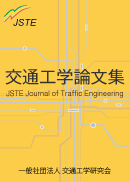Volume 8, Issue 1
Displaying 1-7 of 7 articles from this issue
- |<
- <
- 1
- >
- >|
Paper (1) Fundamental/Applied Academic Research
-
2022Volume 8Issue 1 Pages 1-10
Published: January 01, 2022
Released on J-STAGE: January 01, 2022
Download PDF (1049K) -
2022Volume 8Issue 1 Pages 11-20
Published: January 01, 2022
Released on J-STAGE: January 01, 2022
Download PDF (8073K)
Paper (2) Case Study/Survey Research/System Development
-
2022Volume 8Issue 1 Pages 21-30
Published: January 01, 2022
Released on J-STAGE: January 01, 2022
Download PDF (1253K) -
2022Volume 8Issue 1 Pages 31-38
Published: January 01, 2022
Released on J-STAGE: January 01, 2022
Download PDF (2731K) -
2022Volume 8Issue 1 Pages 39-48
Published: January 01, 2022
Released on J-STAGE: January 01, 2022
Download PDF (1406K) -
2022Volume 8Issue 1 Pages 49-58
Published: January 01, 2022
Released on J-STAGE: January 01, 2022
Download PDF (1186K) -
2022Volume 8Issue 1 Pages 59-67
Published: January 01, 2022
Released on J-STAGE: January 01, 2022
Download PDF (1538K)
- |<
- <
- 1
- >
- >|
